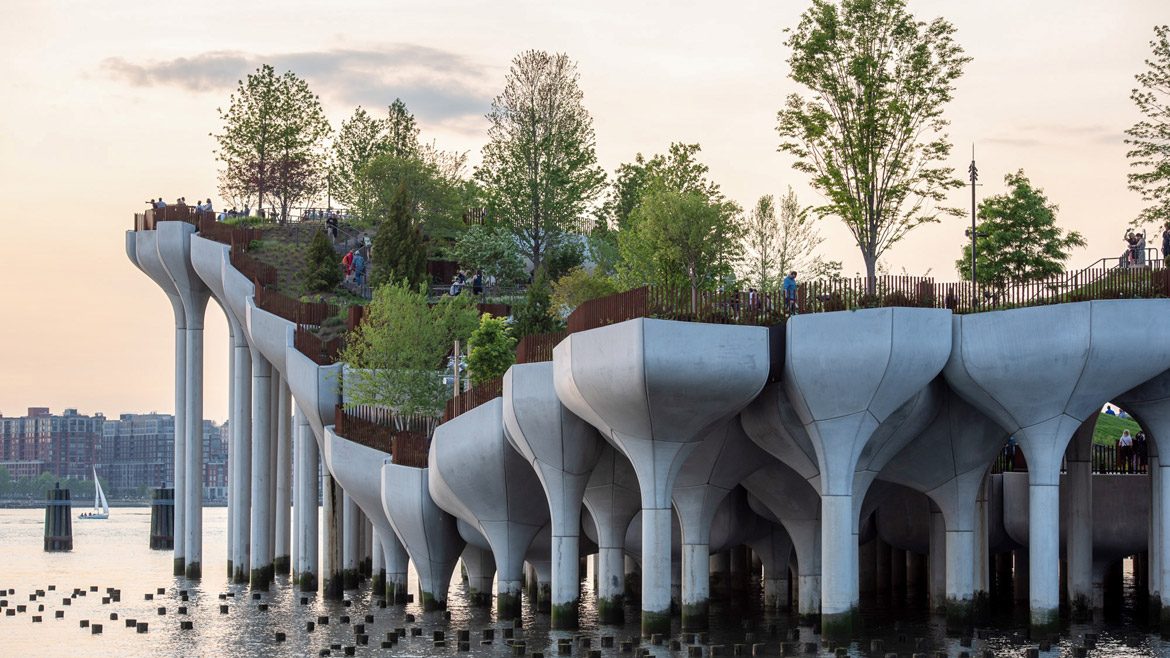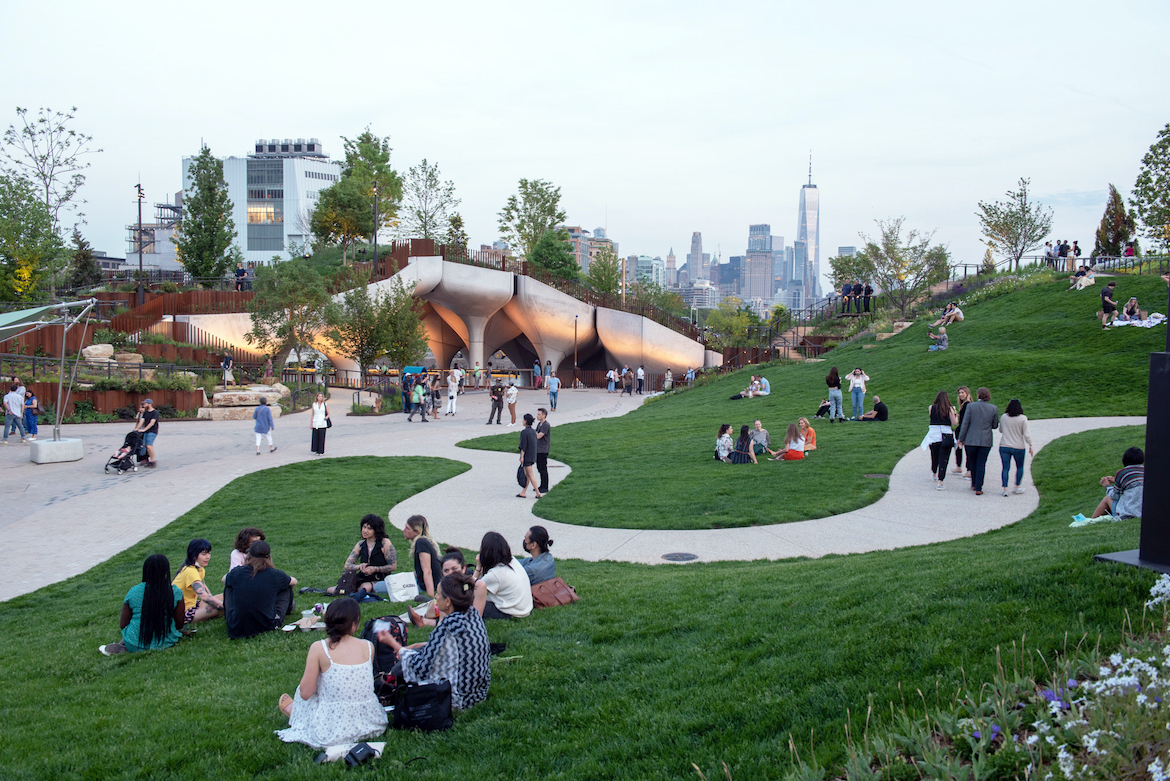Little Island Opens with Big Crowd-Pleasing Ambitions

Photo © Timothy Schenck

Photo © Timothy Schenck

Photo © Timothy Schenck

Photo © Timothy Schenck

Photo © Timothy Schenck





Architects & Firms
Trees and shrubs undulate like a tousled green crown in a forest of precast-concrete pilings rising out of the Hudson River that unfurl into interlocking tulip-shaped containers for the landscape within. This eye-catching spectacle is Little Island, an addition to the Hudson River Park just north of Renzo Piano’s Whitney Museum on the western edge of Manhattan. It opened May 21.
This tiny, 2.4-acre tour de force of architecture, engineering and landscape design is the brainchild of Heatherwick Studio, known for the artichoke-shaped 150-foot high stair-entwined Vessel at Hudson Yards. Thomas Heatherwick worked with Signe Nielsen, of the landscape architecture firm MNLA, and Arup as engineers.
First asked to design a pavilion on a nearby pier in need of renovation, Heatherwick says he asked his clients, the Hudson River Park Trust, which operates the 4.5-mile-long waterfront park, and the philanthropist Barry Diller, “Wouldn’t you rather be over the river, to imagine that pier with topography?” This shoot-the-moon upselling strategy worked: Diller and his wife, the fashion designer Diane von Furstenberg, agreed to underwrite most of the cost of the park (which ballooned from $130 million in 2015 to $260 million). The couple’s family foundation added $120 million to support operations for a period of years.
The crumbling pier was demolished and the lilliputian park pulled away from the shoreline rose. When crossing one of the pair of ramps that connect the island to the river bank, Heatherwick explains, “Emotionally, you leave Manhattan behind for a micro portion of day.”
The visitor passes through a portal framed by the swelling concrete piles and arrives in a protected, bowl-shaped gathering space, surrounded by a dramatically rumpled topography, featuring diminutive bluffs, meadows, and sloping lawns. Serpentine paths (friendly to wheelchairs) invite visitors to amble as they discover hidden nooks and expansive river and city views, all framed by trees.
The landscape strategy was inspired by Acadia National Park, near Bangor, Maine, according to Signe Nielsen—“It is a coastal landscape of tremendous beauty,” she says—and is similar to the severe, changing climate conditions found at the river. Groupings of trees are densely planted at the east and northern edges of the park to fend off fierce winds, for example.
The folded and shaped landscape artfully hides two performance venues—concerts had been the primary—if poorly suited—purpose of the derelict (now demolished) pier. A thrust-stage amphitheater seating 687 has the river as a backdrop and tucks back of house functions beneath surrounding slopes.
Another informal venue feels like a glade, hemmed in by hillocks that frame views of lower Manhattan. The gathering space and its sloping lawn can also be used as a venue for as many as 2,000 people. A robust series of summer concerts is already planned.
The design team sweated the details of the 132 tulip-shaped pilings, creating the apparent irregularity with just 39 separate formwork elements. Reinforcing steel bars project vertically from each of the curving pier caps, while horizontal rebar are placed and concrete is cast over them to form a slab that ties the piling together. Foam-plastic blocks atop the slab were carved to shape the intricate, topographic conditions.
In contentious New York, the completed project will provoke skeptics. It’s a stunningly expensive bauble—privately commissioned and paid for—that ornaments a wealthy neighborhood already rich with amenities, including the High Line park. The project was nearly halted by a snit between Diller and a fellow developer and philanthropist Douglas Durst.
New Yorkers desperate to escape their Covid cocoons are already swarming the park, embracing its idiosyncrasy. Much -delayed, Little Island could not have arrived at a better time.











